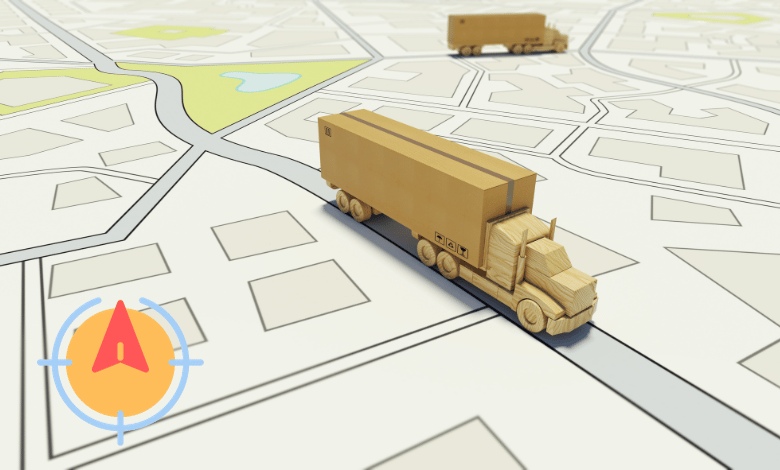Exploring the Pivotal Role of IoT in Fleet Management Solutions

IoT, or the Internet of Things, is one of the thriving technologies of our time.
If you’re not already aware, IoT refers to a network of interconnected physical vehicles, devices, buildings, and other objects.
These objects are equipped with sensors, software, and network connectivity, allowing them to collect and exchange data.
These devices have the capability to exchange data with each other and central systems through the Internet or alternative communication protocols, enabling them to collect data, make autonomous decisions, and execute a range of tasks.
IoT plays a big role in streamlining fleet management solutions by integrating IoT technologies and devices into the operation of a fleet of vehicles to improve safety, efficiency, and overall performance.
An IoT-integrated transport management solution, such as VTMS, makes managing the whole fleet easier and effortless while cutting down operational costs.
In this blog, we will discuss in detail the reasons and benefits of IoT in fleet management solutions.
So, without further ado, let’s dive in.
Why is IoT Crucial for Fleet Management? Reasons & Benefits
There are a lot of factors that necessitate the inclusion of IoT in fleet management, and mentioned below are a few of them-

Real-time Tracking
IoT devices, such as GPS trackers, can provide real-time location data for each vehicle in a fleet.
This allows fleet managers to monitor the exact whereabouts of their vehicles at any given moment, helping with route optimization, efficient dispatching, and ensuring timely deliveries or pickups.
Data Analytics
Furthermore, IoT sensors and devices installed in vehicles can gather a wealth of information beyond just location, including vehicle speed, fuel consumption, engine health, and driver behavior.
You can analyze this data to identify trends, inefficiencies, and opportunities for cost savings or performance improvements.
Fuel Efficiency
IoT technology can track fuel consumption and driver behavior, allowing fleet managers to identify inefficient driving habits and take steps to improve fuel efficiency. This can lead to significant cost savings over time.
Safety Monitoring
Such systems can also monitor driver behavior, such as speeding, harsh braking, and rapid acceleration. This data can be used to promote safer driving practices, reduce accidents, and lower insurance costs.
Compliance and Reporting
IoT can assist in regulatory compliance by automatically recording and reporting data required for compliance with industry-specific regulations, such as Hours of Service (HOS) regulations for commercial drivers.
Enhanced Customer Service
Real-time tracking and monitoring of vehicles can improve customer service by providing accurate arrival times and better visibility into the status of deliveries or services.
Cost Reduction
By optimizing routes, reducing fuel consumption, preventing breakdowns, and improving driver behavior, IoT can lead to significant cost reductions for fleet operations.
Environmental Impact
IoT-driven improvements in fuel efficiency and route optimization can help reduce the carbon footprint of a fleet, contributing to sustainability goals and potentially attracting environmentally conscious customers.
Elevate Fleet Management through IoT Adoption. Start Today with VTMS!
In current times, technology has become a key player in making things easier and smarter. One area where it’s making a big impact is fleet management, where IoT (Internet of Things) is changing the game.
We have explained how it can streamline the entire fleet management procedure and keep you updated with real-time data.
By adopting such a system, you can save money on fuel, prevent breakdowns before they happen, and make your drivers safer on the road. Plus, you’ll be helping the environment by reducing emissions.
If you need more details on how VTMS can benefit you, schedule a call with us today!
FAQ’S
What is IoT in Fleet Management, and How Does It Work?
IoT in fleet management involves integrating sensor-equipped devices into vehicles and using network connectivity to collect and exchange data. These devices enable real-time tracking, monitoring, and data analysis, allowing fleet managers to make informed decisions and optimize operations.
What Are the Key Benefits of Implementing IoT in Fleet Management?
The key benefits of IoT in fleet management include improved safety through real-time tracking and driver behavior monitoring, enhanced efficiency with route optimization and maintenance alerts, reduced operational costs, and increased overall performance and customer satisfaction. IoT also enables data-driven decision-making.
How Does IoT Enhance Vehicle Maintenance and Preventive Measures?
IoT devices can monitor various vehicle parameters in real-time, such as engine performance, tire pressure, and fuel consumption. When anomalies are detected, the system can send alerts to fleet managers, enabling them to schedule preventive maintenance, reducing downtime, and avoiding costly breakdowns.
Can IoT Improve Driver Safety in Fleet Management?
Yes, IoT can significantly enhance driver safety. Sensors and cameras can monitor driver behavior, providing insights into speeding, harsh braking, and other risky actions. Fleet managers can use this data for coaching and training to promote safer driving practices, ultimately reducing accidents and associated costs.
How Does IoT Contribute to Fuel Efficiency in Fleet Management?
IoT devices help optimize fuel efficiency by monitoring factors like engine performance and idle time. By analyzing this data, fleet managers can identify opportunities to reduce fuel consumption, including better route planning and driver behavior adjustments, resulting in significant cost savings and a reduced environmental impact.
These FAQs and their answers can serve as a starting point for your blog, providing valuable information to your readers about the importance of IoT in fleet management solutions.
Quick Read: Optimizing Vehicle Maintenance: Streamlining Service and Maintenance with Tracking Solutions